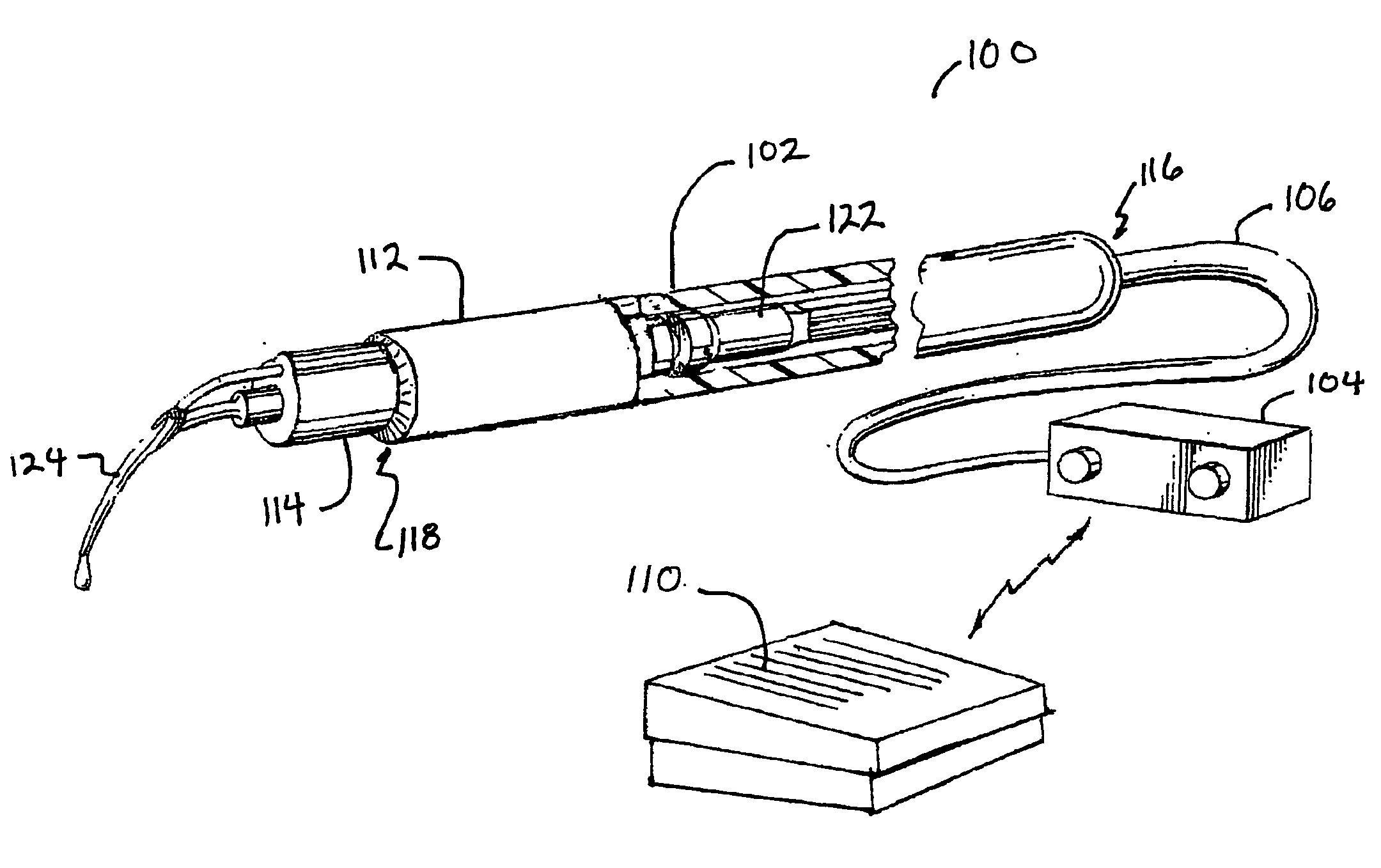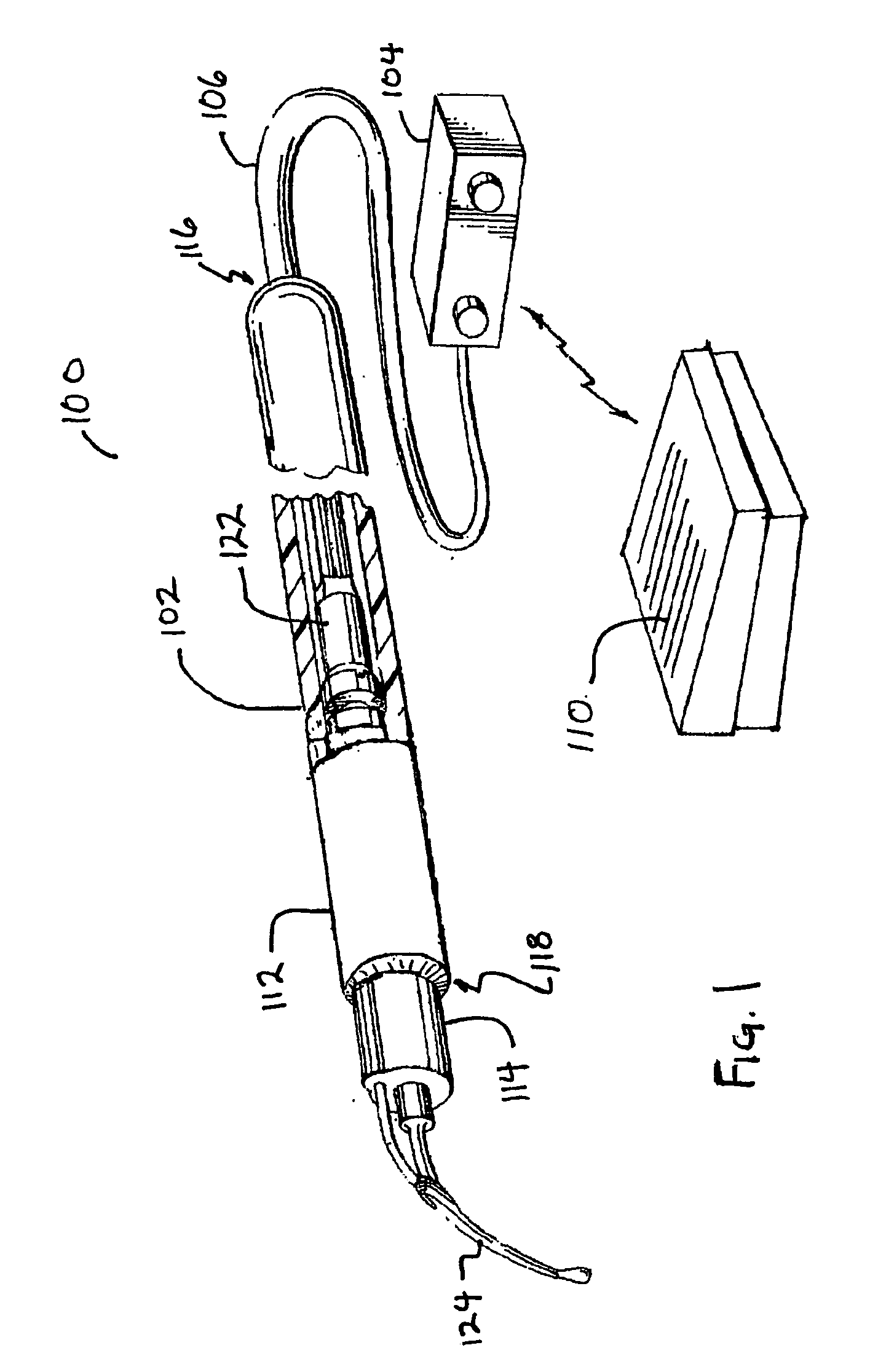Wireless control for dental equipment
a technology for controlling devices and dental equipment, applied in the field of dental instruments, can solve the problems of reducing the efficiency of dental procedures, complexity and clutter in the environment, and the cable can be a potential hazard for both the dental professional and the patient, and achieves the effects of convenient adjustment, convenient adjustment, and flexible equipment control
- Summary
- Abstract
- Description
- Claims
- Application Information
AI Technical Summary
Benefits of technology
Problems solved by technology
Method used
Image
Examples
Embodiment Construction
[0037] Conventional ultrasonic units have a footswitch connected to the unit with a cable. When the foot control is depressed, a solenoid valve is activated permitting the flow of water and electricity through the regulator and through the solenoid, to the handpiece and over the dental insert or tip. Vibration of the insert is thus initiated by energizing the ultrasonic generation mechanism.
[0038]FIG. 1 illustrates an embodiment of the present invention in the form of an ultrasonic dental system 100 including an ultrasonic dental tool 102 attached to an electrical energy & fluid source 104, via a cable 106 along with a wireless control switch, shown here as a wireless foot pedal 110, conveniently disposed within easy reach by the dental professional. The cable 106 includes a conduit for carrying fluid as well as wires for carrying electrical power and signals from the electrical energy and fluid source 104 to the ultrasonic dental tool 102. The ultrasonic dental tool 102 includes a...
PUM
 Login to View More
Login to View More Abstract
Description
Claims
Application Information
 Login to View More
Login to View More - R&D
- Intellectual Property
- Life Sciences
- Materials
- Tech Scout
- Unparalleled Data Quality
- Higher Quality Content
- 60% Fewer Hallucinations
Browse by: Latest US Patents, China's latest patents, Technical Efficacy Thesaurus, Application Domain, Technology Topic, Popular Technical Reports.
© 2025 PatSnap. All rights reserved.Legal|Privacy policy|Modern Slavery Act Transparency Statement|Sitemap|About US| Contact US: help@patsnap.com



